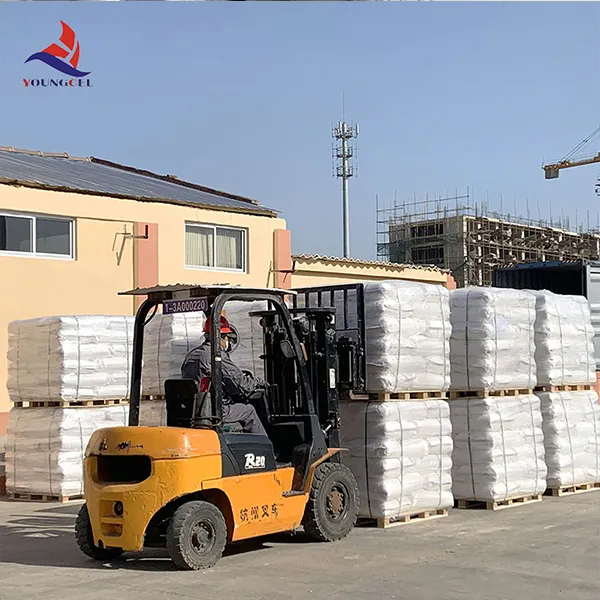Exploring HPMC Ether A Versatile Polymer for Modern Applications
Hydroxypropyl methylcellulose (HPMC) ether is a synthetic polymer that has gained significant traction across various industries due to its unique properties and versatility. This article delves into the characteristics, applications, and benefits of HPMC ether in different fields.
What is HPMC Ether?
HPMC is a derivative of cellulose, a naturally occurring polymer found in plant cell walls. The modification process involves substituting some of the hydroxyl groups in cellulose with hydroxypropyl and methoxy groups. This transformation bestows HPMC ether with a range of beneficial properties, including solubility in water, gel formation, and the ability to form stable emulsions. It is available in various grades, each tailored for specific applications, making it a highly versatile polymer in both industrial and consumer products.
Key Properties of HPMC Ether
One of the most notable features of HPMC ether is its ability to dissolve in both hot and cold water, forming a transparent, viscous solution. This characteristic is crucial in applications where clarity and stability are paramount. Additionally, HPMC ether demonstrates excellent film-forming abilities and can create a barrier against moisture, which is beneficial in various formulations.
HPMC also exhibits remarkable thermal stability and can withstand a wide range of temperatures without degrading. Moreover, it has a low toxicity profile, making it safe for use in food and pharmaceutical products. This combination of properties positions HPMC ether as a valuable ingredient in many formulations.
Applications of HPMC Ether
HPMC ether is widely used in several industries, including pharmaceuticals, food, construction, and personal care.
hpmc ether

1. Pharmaceuticals In the pharmaceutical sector, HPMC ether serves as a binder, thickener, and stabilizer in the formulation of tablets and suspensions. Its ability to control the release of active ingredients makes it an essential component in developing controlled-release drug delivery systems.
2. Food Industry In the food industry, HPMC ether acts as a thickening agent, emulsifier, and stabilizer in products such as sauces, desserts, and bakery items. Its capacity to retain moisture enhances the texture and shelf life of food products, making it a popular choice among food manufacturers.
3. Construction In construction materials, HPMC ether is commonly used in tile adhesives, wall putties, and plaster. It improves workability, increases adhesion, and enhances water retention, which are critical factors in ensuring the durability and effectiveness of construction materials.
4. Personal Care HPMC ether is also prominent in the cosmetic and personal care industries, where it is utilized in shampoos, lotions, and creams. Its film-forming and thickening properties contribute to the texture and stability of cosmetic products, providing a pleasant user experience.
Benefits of Using HPMC Ether
The benefits of incorporating HPMC ether into formulations are numerous. Its ability to improve the stability and performance of products can lead to enhanced customer satisfaction and loyalty. Additionally, HPMC is cost-effective, providing manufacturers with a reliable option without significantly impacting production costs.
Moreover, its safety profile and compatibility with other ingredients make it an attractive choice for formulators looking to create high-quality products across various sectors.
Conclusion
In summary, hydroxypropyl methylcellulose (HPMC) ether is a remarkable polymer that plays a crucial role in a variety of applications. Its multifunctional properties provide significant advantages in pharmaceuticals, food, construction, and personal care products. As industries continue to innovate, the demand for versatile and effective ingredients like HPMC ether is expected to grow, further cementing its position as a key player in modern formulations.
-
Premium Detergent Grade HPMC Hydroxypropyl Methylcellulose: Superior Thickening & StabilityNewsAug.31,2025
-
HEC 100000 Hydroxyethylcellulose for Paint | Superior ThickeningNewsAug.30,2025
-
Wall Putty Rdp Powder Packaging DesignNewsAug.29,2025
-
Introduction to Hpmc Hydroxypropyl Methyl CellulosNewsAug.29,2025
-
Hpmc Industri Grade IntegrationNewsAug.29,2025
-
How to Choose the Right Construction AdhesiveNewsAug.29,2025




